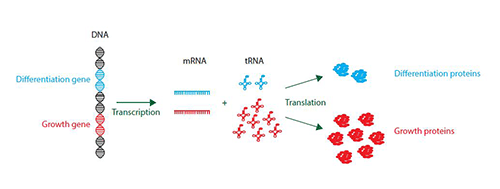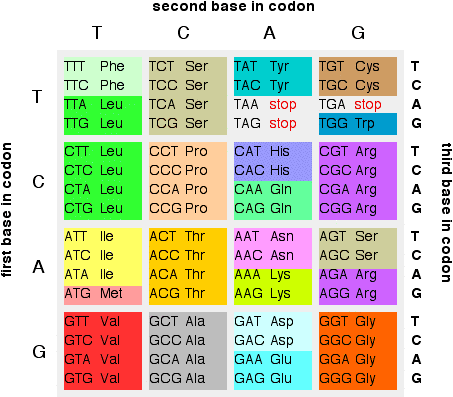Newly identified gene codes turn up cancer growth
New research identifies a previously unknown layer in the regulation of our genes, which is actively exploited by cancer cells to enhance their growth. The results come from an international collaboration, headed by researchers at BRIC, University of Copenhagen and the Weizmann Institute. It has long been known that our genes are expressed via translation to proteins, a process facilitated by translator molecules called tRNAs. The new results show that our genes, besides the protein-code, also contain sub-codes affecting the translation activity. A changed expression of tRNA molecules in cancer cells puzzled the researchers. They found that certain tRNAs, which specifically translate genes that stimulate cell division, are more abundant in cancer cells. By increasing their content of this sub-set of translator-molecules, the cancer cells are able to increase their growth. The results mark a new conceptual understanding of genetic mechanisms and deliver a molecular target for cancer treatment.
Unknown layer of gene regulation
In 2009 the research group of Professor Anders H. Lund at BRIC became engaged in a large Danish collaborative research project supported by the National Advanced Technology Foundation. The team set out to analyse the content of RNA molecules in hundreds of tumour samples. Their results confirmed earlier studies, showing a changed expression of tRNA molecules in tumours. The researchers set out to find an explanation and established an international collaboration with Danish, American and Israeli researchers. Excitingly, they now demonstrate that the set of tRNAs up in cancer specifically translate growth genes to protein. For the first time they were able to show that different tRNA molecules have a preference for genes with a certain function, representing a whole new layer of gene regulation. The results are published in the high impact journal Cell.

“So far we only have limited knowledge of this regulation process. The sub-codes, called codons, are read by tRNAs when our DNA is translated to protein. We show, that groups of genes with the same function, e.g. growth genes, uses a specific set of codons and thus are translated by tRNAs with a preference for exactly those codons” says postdoc Disa Tehler, who has headed the Danish part of the investigation.
Cancer cells enhance their growth
The new results explain why cancer cells increase their content of sub-sets of tRNA molecules. The researchers also observed that tumours have a lower level of tRNAs with a preference for so-called differentiation genes. Differentiation is a process where new cells change to become more specialised types e.g. a nerve cell. Cell differentiation and cancer are in general conflicting events and a lower translation of differentiation genes will therefore give the cancer cell an additional advantage.
“We show that cancer cells turn up translation of growth genes and decrease translation of differentiation genes, resulting in uncontrolled cell division. Our understanding of this tRNA-specialization opens up new treatment perspectives. If we can develop drugs that inhibit ‘bad’ or increase ‘good’ tRNAs, we may be able to decrease cancer growth” says Professor Anders Lund.
With the identification of translational sub-codes, the next step for the researchers is to understand how tRNAs are regulated in our cells. Can the cells “sense” a demand for specific tRNAs when they need to divide or differentiate? And how do cancer cells turn up selected tRNAs?
“Our new knowledge is so radical, that it leaves us with new fundamental biological questions. Questions that are crucial to understand processes as development and how cancer arise” ends Anders Lund.
The project is supported by research grants from the National Advanced Technology Foundation and the Danish Cancer Society.
From DNA to protein
|
Related News
Contact
Professor Anders H. Lund, BRIC
Phone: +45 35325657
E-mail: anders.lund@bric.ku.dk
Postdoc Disa Tehler, BRIC
Phone +45 35325817
E-mail: disa.tehler@bric.ku.dk
Research Coordinator Katrine Sonne-Hansen
Phone: +45 21329040
E-mail: katrine.sonne@bric.ku.dk
Original Paper
Hila Gingold, Disa Tehler et al.: A dual program for translation regulation in cellular proliferation and differentiation. Cell, 2014.

